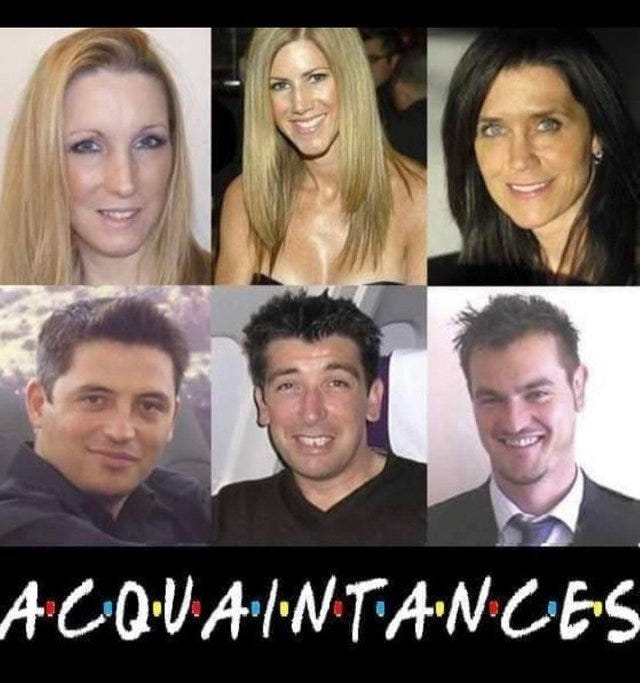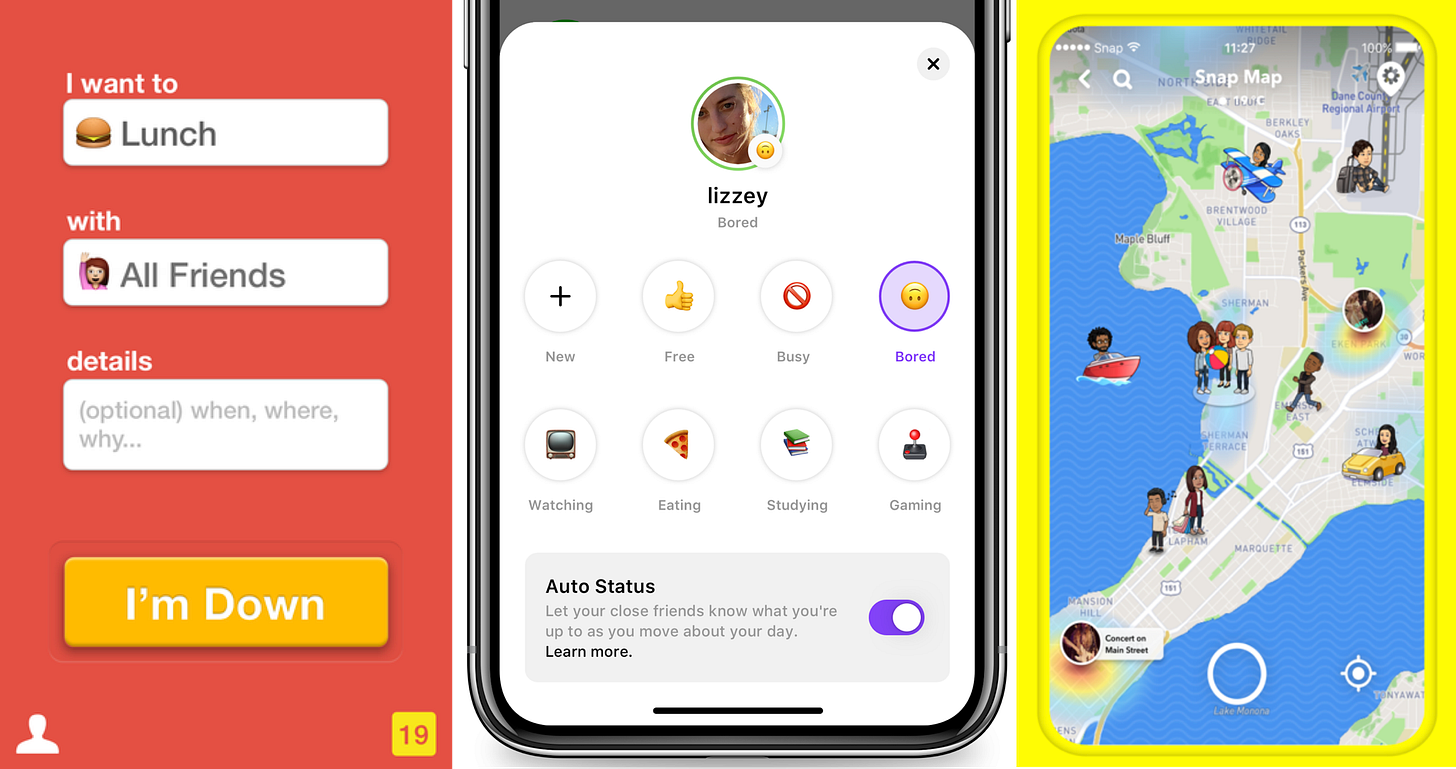Can an app revive acquaintanceship?
Josh Constine's newsletter #9: Everyone feels lonely! Plus, podcast highlight app Tl;Dl

Quarantine is dismantling acquaintanceship and it’s honestly making me pretty sad. We have Zoom and phone calls to maintain close friendships and social networks for broadcasting to followers with overlapping interests. But there’s a big hole in the middle: acquaintanceship. Seeing them serendipitously at a party, sharing a hug and a laugh, even if we’d never hang out 1-on-1…it mattered. They’re who make the world feel welcoming and a city feel like home. Tech has done a mediocre job of encouraging direct connection, even if brief, with those in our outer circle.
With shelter-in-place and social distance, we’re forced to be much more proactive to stay in touch. It grows ever easier to assume even closer friends are too busy, or are sick of hanging remotely, or just don’t actually enjoy you, so we don’t even ask. All it takes is a getting left on ‘read’ or met with a curt excuse a few times to start feeling desperate and stop reaching out. No one wants to beg people to hang out with them, but then the walls begin to grow taller. I started feeling this way last week, and it’s rough because it deters you from connection and makes you second guess whether you’re even worth hanging out with.
Video calls are emotionally taxing and we can be exhausted with the medium from constant use for work. This situation may be particularly tough on men, as many never developed a culture of chatting on the phone with their buddies. The result is a collapse of prismatic identity, where we express different sides of ourselves to different audiences. These dimensions of our personality can atrophy, leaving us feeling socially claustrophobic.

Back at school, I studied the “Weak Tie Theory” of sociology with its author Professor Mark Granovetter. We explored how social media proved his hypothesis that we gain more resources and perspective from our fainter relationships because these people have less overlap with our experiences and therefore more novel knowledge and opportunities to share. We calcify with stubbornness and miss chances without their stimulation.
The hole in the social app ecosystem
There are a few emergent antidotes. Instagram Stories replies momentarily bridge the void between us and our acquaintances. I’m sure you too have replied to someone’s Instagram, Facebook, or Snapchat Story that you’d never have messaged out of the blue. Story replies are a widely underestimated medium. They’re more momentous than a public comment and make us feel validated in ways Likes don’t. From a growth hack perspective, they’re a genius way of spurring net new conversations that rack up unignorable notifications while also goading you to post more. With the Story as an icebreaker, we’re comfortable opening a private space with an acquaintance where an angle of our prismatic identity shines through. Still, these connections tend to be thin, fleeting, and sometimes a little thirsty.
Group chats are another critical tool here. They loop us in with both close friends and weak ties, strengthening those bonds as we riff on memes and hobbies. But they nudge us to conform to a behavioral common denominator around those activities. And they can be awkward to initiate without some real-world logistics as a trigger: coordinating a night out or group activity becomes a long-running thread for other purposes. Social distance has robbed us of many of those triggers.

Maps are not the answer here. Too many social products like Foursquare, Facebook Nearby Friends, Snap Map, and Zenly fail because they errantly focus on location instead of intent. It doesn’t actually matter if you learn that a pal is at the cafe around the corner if you don’t know their intention. They might be working, with family, or on a date. Their proximity only becomes relevant if they’re willingly open to a serendipitous meetup. We might text a close friend to check if they’d want you to drop in, but not an acquaintance.
The closest thing to a solution here was Down To Lunch, which was solely on offline meetups for the teen/college market. It hit App Store #2 but after a smear campaign, it lost steam and the founders shut it down to instead build [SignalFire portfolio company] Alchemy, a $34M-funded ‘Twilio for blockchain’ dev platform. Danny Trinh’s Free never took off. Discord’s Friend List is for limited use cases. Google shuttered its Who’s Down app. Snap Map tested status updates but scrubbed them. Instagram’s auto status feature is a bit too creepy and buried in its underused close friends-only app Threads. Facebook has been tinkering in the space for years but still hasn’t launched anything and it’s no longer where people want to share this sensitive info. None of the newer apps for this have broken through.
Request For Startup…
That’s why there’s a social tech product I expect will emerge: the availability indicator — a way of knowing which friends and acquaintances are free to hang out synchronously. That could be for a quick phone or Zoom chat, a gaming or co-watching session, or an IRL rendezvous (in masks at distance for now). It’d be an evolution of the old green ‘online’ symbol that doesn’t make sense now that we always are since we have our phones with us constantly.
Some friends and I tried to build this in 2013 under the name Signal, as in the bat signal. I also wrote The Quest To Cure Loneliness about the need for it in 2016, and here we are, still with no solution. We need a way to indirectly ask or check to see if people want to hang out without feeling like a nag.
I’m imagining an app where:
Users could say they’re free to hang for a few hours, online (a blue dot) or offline (a green dot), and include a quick intention for what they want to do (optionally an emoji).
People with your phone number can see your status, or you can restrict visibility to only certain contacts like Instagram Close Friends.
You could choose friends to have your status sent to, but the app would also algorithmically pick some to ping. Since they’re not messages coming from you, there’d be less sense of rejection if they don’t respond.
You could opt to add those who respond and that you want to see to an ephemeral group chat or solo chat for coordination, and send them your location.

By building a product like this that includes availability for both our newly normalized online hangouts as well as IRL meetings, it could benefit from the [[Quarantine Concurrent User Loan]] I wrote about recently. This kind of app needs lots of friends using it at once, which people have plenty of time for right now.
Until something like this grows popular, there’s one more answer to thinning acquaintanceship: just say hello, however. Even if you haven’t before, or it’s been a while, or they didn’t respond last time. The only way to surmount the walls we’ve erected between us is to endure the awkwardness and embrace vulnerability. You’ll likely be surprised by the response. A lot of us are lonely but eager, staring at the phone, wondering who feels the same.
App Of The Week: Tl;Dl - Podcast Highlights
When a creativity medium is democratized, the volume of available content swells, necessitating a curational layer. We’ve reached this third stage for podcasts. There are so many now that even at brain-searing 3X speed, there’s no way to listen to them all. Apps for sorting through them have relied on chart rankings, personalized recommendations, editor-curated lists, and full-text search, but they don’t solve the overload problem since they still recommend entire shows or full episodes.
We’re wearing AirPods all the time, but there’s not enough of what I call “snackable audio”. Viddy Thatte tells me “There's so much friction when listening to a new episode, you have to listen to the intro track, 2-3 ads, random housekeeping stuff without any context, and by then 15min have already passed. This is so different from other platforms where we consume content like TikTok / Twitter / YouTube where the content is right there in front of you.”

Enter “Tl;Dl” aka “Too Long, Didn’t Listen”. Tl;Dl for iOS lets you share to and browse a feed of podcast highlight clips. Users can bookmark their favorite parts of podcasts in their preferred consumption app, and share them with a title to Tl;Dl so followers can learn something new and get a taste of a show in a few minutes rather than committing a half-hour. It’s like an ESPN SportsCenter for podcasts. Built by Thatte & Michael Li, the app just launched a week ago and has some rough edges. [Update: There’s also Shuffle, a new app for sharing one-minute clips from podcasts. ] Whether it’s Tl;Dl, Shuffle, or something else, we need a way to navigate the endless sea of podcasts by what tickles our ears.
Meme Of The Week: How To Defeat Skynet
via P3 Productions

Thanks for letting me get a bit vulnerable on this newsletter. Do me a solid and forward or share it to some friends, and reply or comment with what I should write about next!


Shuffle is pretty nifty!
Totally agree this should exist. A couple folks and I tried to tackle this problem a few years back with an invite based app that allowed you to share dynamic links to where you were going thru augmented SMS, Insta, Email. The links pulled you back into the app's invite where you'd see who was going, etc.
The key lesson for us was that cost users placed on committing to meet somewhere is exponentially higher than that of connecting online. It was going to take time for users to "endure the awkwardness and embrace vulnerability" as Josh puts it. While on its face obvious, there were operations and fundraising implications that were not so obvious.
For instance, the metrics of a IRL app are going to be inherently different than that of any online (e.g. chat, video, or gaming) app which require much less to engage. Yet, the metrics will inevitably be compared to those apps. This is a mistake. IRL activity requires more effort from users and hence should be more valuable to the developer. And from a user perspective, one can argue the payoff of the end goal is much greater.
As a second-order effect to the metrics difference, the fundraising conversations were challenging. It was hard to find investors that understood that the dynamics of in-person apps are just different. A YC partner at the time told me, "people don't want to meet in person." While I was confident he was wrong, his perception wasn't uncommon and I think its indicative of the uphill battle IRL apps have in fundraising.
The challenge is even more complicated amidst a pandemic. Yet, in a sense, facilitating in-person connections has become more important than it has ever been.
Keep up the good fight @chillnapp team! Glad to help however. willxemail@gmail -Will